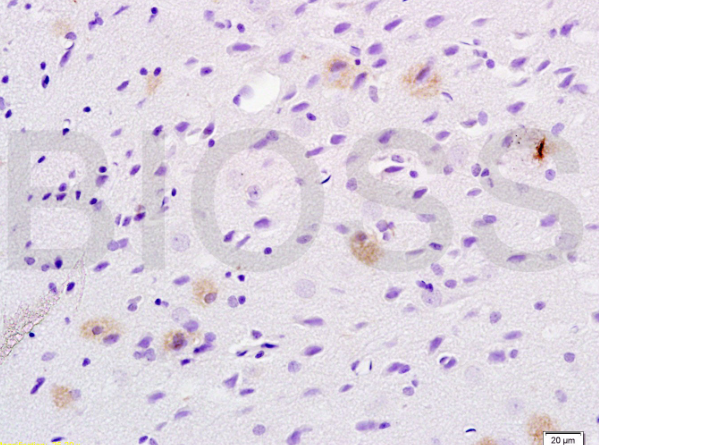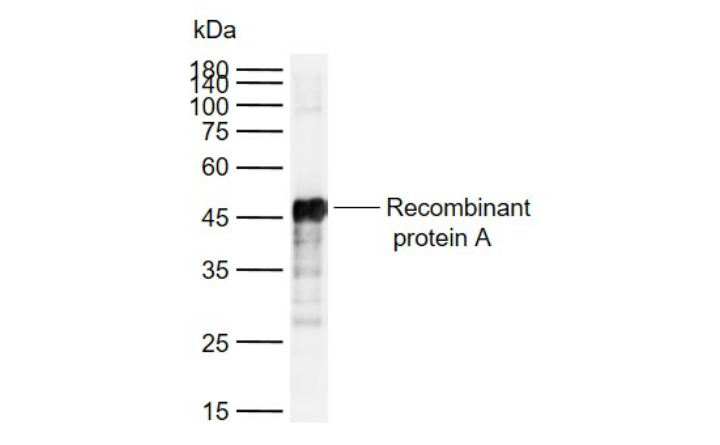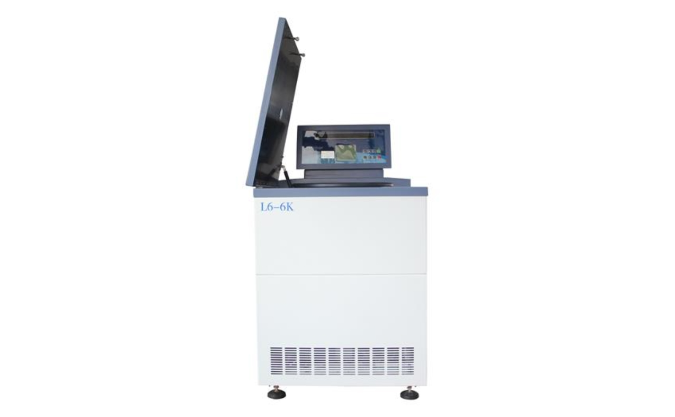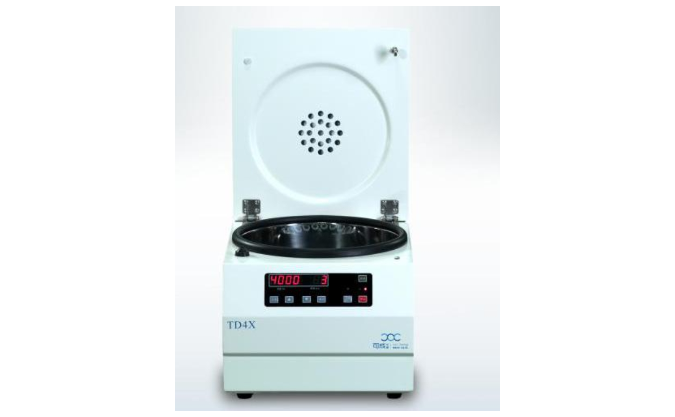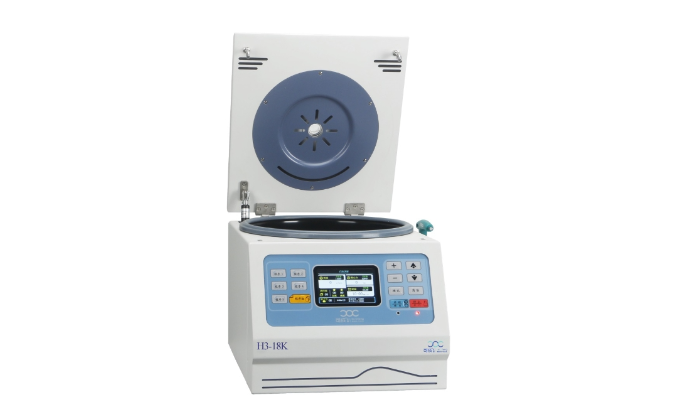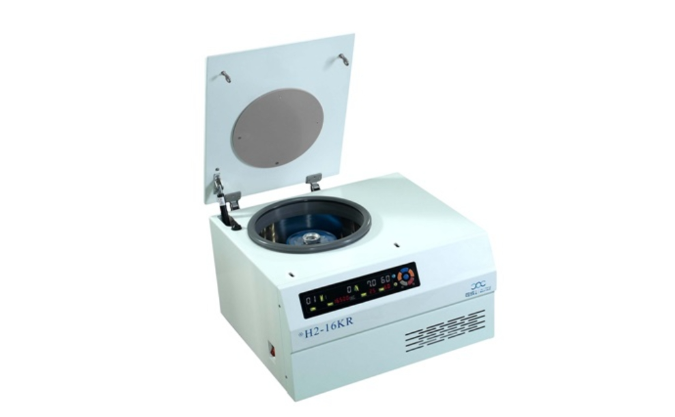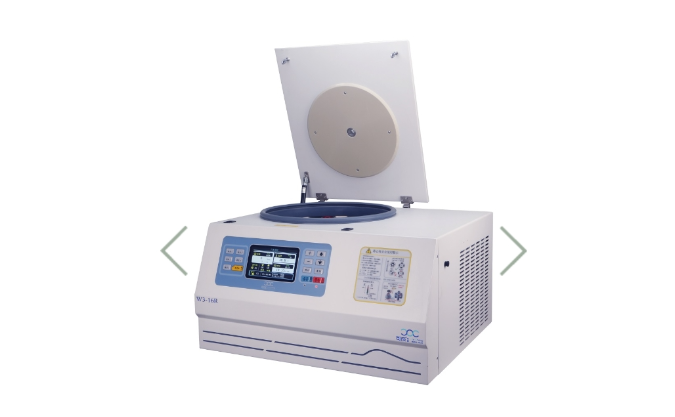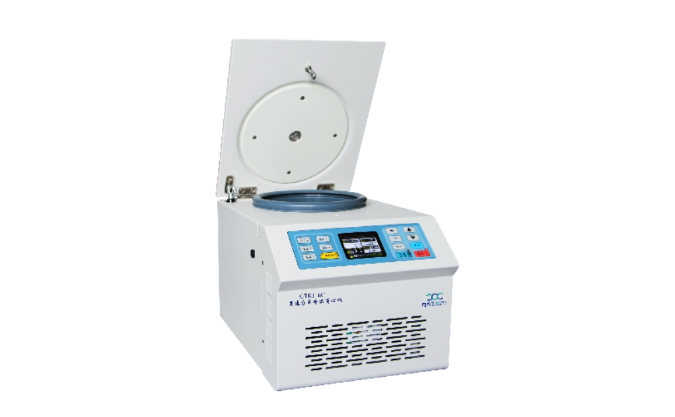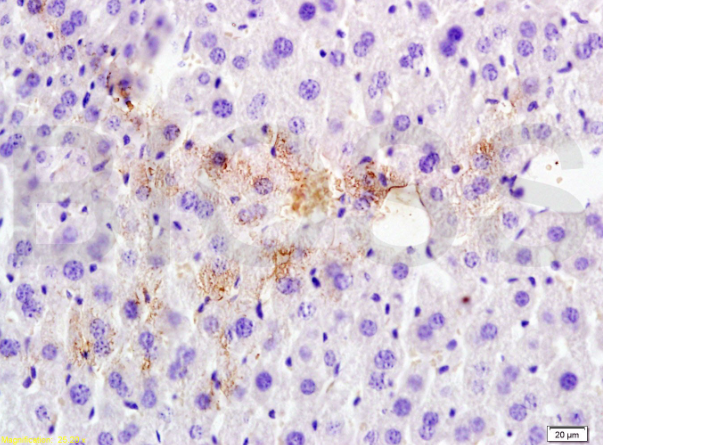
肿瘤易感基因101蛋白抗体
TSG101 Rabbit pAb
- bs-1365R
- 北京博奥森
- 北京市
- 现货
- 按需
- 议价
- 2023-10-18 11:53:16
北京博奥森生物技术有限公司
一键申请试用
咨询
加入意向单
联系方式
- 英文名称
- TSG101 Rabbit pAb
- 别名
- Tumor susceptibility gene 101 protein; ESCRT I complex subunit TSG101; ESCRT-I complex subunit TSG101; TSG 10; TSG 101; TSG10; Tumor susceptibility gene 10; Tumor susceptibility gene 101; Tumor susceptibility protein; Tumor susceptibility protein isoform 3; VPS 23; VPS23; TS101_HUMAN.
产品编号
bs-1365R
产品分类
一抗
产品类型
质检1级
英文名称
TSG101 Rabbit pAb
中文名称
肿瘤易感基因101蛋白抗体
英文别名
Tumor susceptibility gene 101 protein; ESCRT I complex subunit TSG101; ESCRT-I complex subunit TSG101; TSG 10; TSG 101; TSG10; Tumor susceptibility gene 10; Tumor susceptibility gene 101; Tumor susceptibility protein; Tumor susceptibility protein isoform 3; VPS 23; VPS23; TS101_HUMAN.
交叉反应
Human,Rat(predicted:Mouse,Dog,Cow,Horse,Rabbit)
抗体来源
Rabbit
免疫原
KLH conjugated synthetic peptide derived from human Tsg101
亚型
IgG
纯化方法
affinity purified by Protein A
克隆类型
Polyclonal
理论分子量
44kDa
浓度
1mg/ml
储存液
0.01M TBS(pH7.4) with 1% BSA, 0.03% Proclin300 and 50% Glycerol.
保存条件
Shipped at 4℃. Store at -20 °C for one year. Avoid repeated freeze/thaw cycles.
功能
Component of the ESCRT-I complex, a regulator of vesicular trafficking process. Binds to ubiquitinated cargo proteins and is required for the sorting of endocytic ubiquitinated cargos into multivesicular bodies (MVBs). Mediates the association between the ESCRT-0 and ESCRT-I complex. Required for completion of cytokinesis; the function requires CEP55. May be involved in cell growth and differentiation. Acts as a negative growth regulator. Involved in the budding of many viruses through an interaction with viral proteins that contain a late-budding motif P-[ST]-A-P. This interaction is essential for viral particle budding of numerous retroviruses.
亚基
Component of the ESCRT-I complex (endosomal sorting complex required for transport I) which consists of TSG101, VPS28, a VPS37 protein (VPS37A to -D) and a FAM125/MVB12 protein (FAM125A or -B) in a 1:1:1:1 stoechiometry. Interacts with VPS37A, VPS37B and VPS37C. Interacts with ubiquitin, stathmin, GMCL, DMAP1 and AATF (By similarity). Interacts with HGS; the interaction mediates the association with the ESCRT-0 complex. Interacts with GGA1 and GGA3. Interacts (via UEV domain) with PDCD6IP/AIP1. Interacts with VPS28, SNF8 and VPS36. Self-associates. Interacts with FAM125A/MVB12A; the association appears to be mediated by the TSG101-VPS37 binary subcomplex. Interacts with VPS37D. Interacts with LRSAM1. Interacts with CEP55; the interaction is required for cytokinesis but not for viral budding. Interacts with PDCD6. Interacts with HIV-1 p6. Interacts with human spumavirus Gag. Interacts with HTLV-1 Gag. Interacts with Ebola virus VP40. Interacts with EIAV p9; the interaction has been shown in vitro. Interacts with MGRN1.
亚细胞定位
Cytoplasm. Membrane; Peripheral membrane protein. Nucleus. Late endosome membrane; Peripheral membrane protein. Note=Mainly cytoplasmic. Membrane-associated when active and soluble when inactive. Depending on the stage of the cell cycle, detected in the nucleus. Colocalized with CEP55 in the midbody during cytokinesis.
组织特异性
Heart, brain, placenta, lung, liver, skeletal, kidney and pancreas.
翻译后修饰
Monoubiquitinated at multiple sites by LRSAM1 and by MGRN1. Ubiquitination inactivates it, possibly by regulating its shuttling between an active membrane-bound protein and an inactive soluble form. Ubiquitination by MGRN1 requires the presence of UBE2D1.
相似性
Belongs to the ubiquitin-conjugating enzyme family. UEV subfamily.
Contains 1 SB (steadiness box) domain.
Contains 1 UEV (ubiquitin E2 variant) domain.
Contains 1 SB (steadiness box) domain.
Contains 1 UEV (ubiquitin E2 variant) domain.
数据库链接
Entrez Gene: 7251 Human
SwissProt: Q99816 Human
背景资料
The protein encoded by this gene belongs to a group of apparently inactive homologs of ubiquitin-conjugating enzymes. The gene product contains a coiled-coil domain that interacts with stathmin, a cytosolic phosphoprotein implicated in tumorigenesis. The protein may play a role in cell growth and differentiation and act as a negative growth regulator. In vitro steady-state expression of this tumor susceptibility gene appears to be important for maintenance of genomic stability and cell cycle regulation. Mutations and alternative splicing in this gene occur in high frequency in breast cancer and suggest that defects occur during breast cancer tumorigenesis and/or progression. [provided by RefSeq, Jul 2008]

